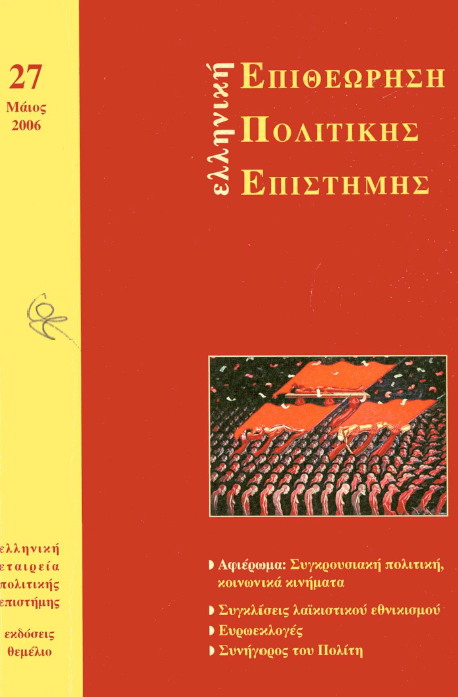The second-order election model and the European Parliament elections of June 2004 in Greece
Abstract
This article seeks to examine the 2004 European Election in Greece, with the help of the second-order election model. In the first part, we analyse the theoretical framework of minor elections and we refer to the characteristics and hypotheses of the model that was formulated by Reif and Schmitt in 1980, which is mainly used in the study of European Parliament elections. In the second part of the article, we examine the main theoretical axis of the model for the June 2004 election and show that the hypotheses about participation and the parties’ quotas are verified. Therefore, the 2004 European Election in Greece was a second-order election.
Article Details
- How to Cite
-
Τεπέρογλου Ε., & Σκρίνης Σ. (2017). The second-order election model and the European Parliament elections of June 2004 in Greece. Greek Political Science Review, 27(1), 126–147. https://doi.org/10.12681/hpsa.14675
- Section
- Articles

This work is licensed under a Creative Commons Attribution-NonCommercial-ShareAlike 4.0 International License.
Authors who publish with this journal agree to the following terms:
Authors retain copyright and grant the journal right of first publication with the work simultaneously licensed under a Creative Commons Attribution licence that allows others to share the work with an acknowledgement of the work's authorship and initial publication in this journal.
Authors are able to enter into separate, additional contractual arrangements for the non-exclusive distribution of the journal's published version of the work (e.g. post it to an institutional repository or publish it in a book), with an acknowledgement of its initial publication in this journal.
Authors are permitted and encouraged to post their work online (preferably in institutional repositories or on their website) prior to and during the submission process, as it can lead to productive exchanges, as well as earlier and greater citation of published work (See The Effect of Open Access).




